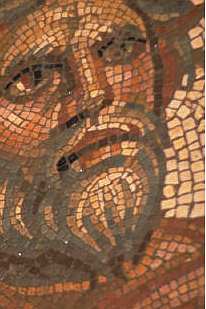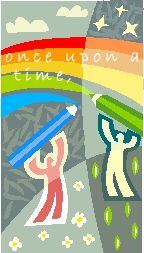-
Please note this disclaimer: Sources for these notes are credited as they are included. Material from the Internet such as from Wikipedia,
etc. is intended as initial, general information only and should
be regarded with the same rigorous scrutiny as any source presented as
expert or authoritative. Further research in scholarly and professional
publications is always the strongest way to find and validate
authoritative commentary, studies and other formal inquiry. jt
Stories occur all around us whether we
acknowledge them or not. Any unit of time contains elements of story. Any span
of a lifetime, or historical era is full of stories. To
understand something about what a story is and what it is made of, some defining is
a good place to start, as usual.
Tracing the origin and development of words to
indicate story (in English) we find it defined as an:
"account of some happening," c.1225,
"narrative of important events or celebrated persons of the past," from O.Fr.
estorie, from L.L.
storia
and L.
historia "history, account, tale, story"
(see
history). Meaning "recital of true events" first recorded c.1375; sense
of "narrative of fictitious events
meant to entertain" is from c.1500. Not differentiated from
history till 1500s. As a euphemism for "a lie" it dates from 1697.
Meaning "newspaper article" is from 1892.
Story-teller
is from 1709.
Story-line first attested 1941.
That's another story "that requires different
treatment" is attested from 1818.
Story of my life
"sad truth" first recorded 1938. Source:
Online Etymological Dictionary. [emphasis added]
Story telling is as old as humanity, first expressed through the language of gesture,
song, movement and
image, and, ever more elaborately, as spoken language developed. As humans, we all
seem to be deeply interested in our common experiences, problems, solutions and
almost any discovery.
 In a nutshell, stories form around a main
"problem," challenge or conflict and its resolution.
A "problem" can even be the challenge/task of explaining something as
might be expressed in a formal thesis statement. Since our lives seem
to be a procession of problems, challenges and conflicts, right away we
can relate. The pleasures of surviving such difficulties, even in print
or on a screen, can make life seem better, as we've all experienced.
Learning to find solutions to life's problems seems to occur through a
process of imitation from infancy on. When we
can see how one person has survived a problem or solved one like something we are
faced with, we can deal much easier and more successfully with the challenge.
Our current recognition of support groups as help in problem solving, recovery,
personal understanding, etc. seems to evidence the value of information sharing aka story telling.
In early societies and still in many native cultures, information is
transferred mainly through story See the work of
Leslie Marmon Silko,
("...the idea that one story is only the beginning of many stories, and the
sense that stories never truly end represents an important contribution of
Native American cultures to the English language."),
N.Scott Momaday, and other "first peoples"
writers for examples. Of late, even
in academia, anecdotal information, personal truth and cultural
knowledge have come to be regarded with renewed validity. In a nutshell, stories form around a main
"problem," challenge or conflict and its resolution.
A "problem" can even be the challenge/task of explaining something as
might be expressed in a formal thesis statement. Since our lives seem
to be a procession of problems, challenges and conflicts, right away we
can relate. The pleasures of surviving such difficulties, even in print
or on a screen, can make life seem better, as we've all experienced.
Learning to find solutions to life's problems seems to occur through a
process of imitation from infancy on. When we
can see how one person has survived a problem or solved one like something we are
faced with, we can deal much easier and more successfully with the challenge.
Our current recognition of support groups as help in problem solving, recovery,
personal understanding, etc. seems to evidence the value of information sharing aka story telling.
In early societies and still in many native cultures, information is
transferred mainly through story See the work of
Leslie Marmon Silko,
("...the idea that one story is only the beginning of many stories, and the
sense that stories never truly end represents an important contribution of
Native American cultures to the English language."),
N.Scott Momaday, and other "first peoples"
writers for examples. Of late, even
in academia, anecdotal information, personal truth and cultural
knowledge have come to be regarded with renewed validity.
Storytelling is the conveying of events in
words,
images, and
sounds often by
improvisation or embellishment. Stories or
narratives have been shared in every culture and in every land as a means of
entertainment, education, preservation of
culture and in order to instill
moral values. Crucial elements of stories and storytelling include
plot
(sequence of events/issues)
and
characters, as well as the
narrative point of view. Storytelling has existed as long as humanity has
had
any sort of language
(a system of
symbols). Based on: wikipedia.org/wiki/Storytelling
HOW THINGS AND PEOPLE CHANGE :The purpose of a story arc [like plot] is to move
a character or a situation
from one situation to another, in other words, to
make a change. This change or transformation often takes the form of
either
Aristotle's
tragic fall from grace or a reversal of that pattern. One common form in
which this reversal is found is a character going from a situation of weakness
to one of strength. For example, a poor woman goes on adventures and in the end
makes a fortune for
 herself, or a lonely man falls in love and marries. Another form of storytelling that offers a change
or transformation of
character is that of "hero's journey," as laid out in
Joseph Campbell's theory of the mono-myth in his work,
The Hero with a Thousand Faces. Christopher Vogler's
The Writer's
Journey: Mythic Structure for Writers details the same theory specifically for
western storytelling. herself, or a lonely man falls in love and marries. Another form of storytelling that offers a change
or transformation of
character is that of "hero's journey," as laid out in
Joseph Campbell's theory of the mono-myth in his work,
The Hero with a Thousand Faces. Christopher Vogler's
The Writer's
Journey: Mythic Structure for Writers details the same theory specifically for
western storytelling.
Story arcs in contemporary drama often follow the
pattern of bringing a character to a low point, removing the structures the
character depends on, then forcing the character to find new strength without
those structures. Aristotle
writes that drama, especially tragedy, is valuable as offering
catharsis for the audience.
Aristotle's
Tragic Hero
is a particular kind of hero that allows us to have empathy and
understanding and even forgiveness. Aristotle
writes that drama, especially tragedy, is valuable as offering
catharsis for the audience.
Aristotle's
Tragic Hero
is a particular kind of hero that allows us to have empathy and
understanding and even forgiveness.
Each person's character is a
primary part of why we do the things we do and think the way we think. Beyond
the issues presented by various moral or ethical teachings, the idea of
archetype can offer several perspectives of patterns in our lives.
Archetype: An original model or type after which other similar things are
patterned; a prototype.
A more familiar generalizing term is "stereotype," but
an archetype tends to differ from a stereotype in that archetype expands the
scope of possibilities and stereotype limits them. Some archetypes that relate
to patterns in our lives are: The Mother, The Father, The Hero, The Child, The Lover, The
Quest, The Warrior,
The /Student.
Carl Jung used the word archetype, from
Heraclitus, to mean
the repeating patterns of the deep subconscious, patterns that appear in our
dreams, sacred narratives, and great art. These archetypal energies can
change not only our individual, personal lives, but also our collective,
cultural lives.
source:
Jeremy Taylor-writer and scholar
Like the patterns implied in the concept of
archetype, the stages of life we all experience--and that are well known from
Shakespeare--can also be ways to focus life story writing and even more conventional, formal kinds of composition.
"All the world's a stage, and all the men and women merely players."
From Shakespeare's As You Like It,
1600
>>>>>>>>>><<<<<<<<<<
Some Ways of Shaping a Story in
Words -- (not in order of preference)
-
Presenting a series of events all related to one point, theme or outcome, with or without
commentary e.g.
John
Berger-The Named and the Celestial
Diaries, letters and journals focused on one period of time, theme,
etc.
-
The anecdote -- the series of events, one
leading to the next -- that pulls us in. Followed by, the "moment of reflection" -- the periodic "here's why I'm telling you this"
that gives it shape. e.g. NPR's This
American Life
-
Starting early in life and continuing chronologically to some concluding point
-
By theme or period of time with related
events connecting to each other with little regard for sequence or setting
.e.g., Books, by Larry Mcmurtry,
Under the
Tuscan Sun by Frances Mayes
-
Identifying the elements of setting,
point of view, characters, protagonist, antagonist, conflict, foreshadowing,
climax, untangling, resolution, tone, figurative language to treat the
events of life much like any combination of fact and fancy, that creates an overall effect, understanding, or experience. e.g. Angela's Ashes,
by Frank McCourt
-
Organize via dramatic phases of theme:
Exposition. Rising Action. Climax. Falling Action. Resolution. e.g., theater
and film scripts. based
on wikipedia.org/wiki/Category:Narratology
|











